- Home
- D. H. Lawrence
Women in Love (Barnes & Noble Classics Series) Page 2
Women in Love (Barnes & Noble Classics Series) Read online
Page 2
Women in Love is Lawrence’s manifesto on the reinvention of modern love, and it was in many ways as much of a bombshell as was The Communist Manifesto, by Karl Marx. Afterward, there would be modern and contemporary writers who would rival Lawrence, but none who surpassed him in this area. F. Scott Fitzgerald’s The Great Gatsby shows the undeniable influence of Lawrence in its treatment of the jaded rich, symbolized by Tom, and their dangerous ideas about race and culture, which are opposed by Gatsby, the symbol of romantic love. However, one could not imagine Gatsby questioning the meaning of modern love nor the tradition from which it sprang.
David Herbert Lawrence was born on September 11, 1885, near Nottingham, England, in the small mining town of Eastwood. His father, Arthur, was a coal miner, the kind of man, typical of workers the world over, who found himself in a dangerous, dead-end job, and even as a miner’s butty, a foreman of sorts, he could barely make a living. He drank to mask his frustration, his pain, and his fears, and he transferred his aggressions to his family in the form of a violence that, while mostly verbal, made their lives at times a living hell. Lawrence thought his mother, Lydia, a saint. However, she was no more a saint than the father was a devil. Like Arthur Lawrence, she, too, was frustrated by poverty and the ugliness of her surroundings. Like him, she transferred her blind hostility against her marginalization to her spouse, falling out of love with him and using his drinking as an excuse to hold him directly responsible for her unhappiness and the lack of opportunity for her children. The fact that her husband was risking his life in the mines every day to provide for her and the children meant nothing to her, and she inoculated her children with her contempt for her husband. No one loved Arthur. No one ever talked to him. No one cared if he lived or died, except as it affected their welfare, and this in turn hardened his attitude toward his family and made him an even more frequent visitor of the pubs. Lawrence duly documents all this in Sons and Lovers, and it is difficult not to feel a measured contempt for the mother and the children who hated their father, while at the same time driving him harder to provide more for them. Lawrence apparently never matured enough to gain perspective on how unfairly his father was treated, flawed though he certainly was.
Lawrence’s biographer, Harry T. Moore, writes about Mrs. Lawrence:
She was proud of these children, and fought fiercely to give them good lives: her sons would not go into the mines, her daughters would not become servants. And through the galling poverty of those years she made intense sacrifices for them, particularly in furthering the education of David Herbert—or Bert, as the family called him.
Unfortunately, this is only part of the story. The intensity of love that was in this woman’s being drove itself outwardly in two directions: she hated her husband and, just as extravagantly, she loved her children. These children became a battleground in the parents’ war (Moore, The Priest of Love, p. 11).
Lawrence began his primary education at the Beauvale Board School, as did all the other children in his family. Frail, sickly, sensitive, uninspired by his environment, picked on by the other boys because he could not play games, but encouraged by his clinging mother, whose aspirations for him set him apart, Lawrence does not appear to have been an especially brilliant student, but one who worked hard. In his teacher W. W. Whitehead, Lawrence would eventually find a supporter. Whitehead tutored him for the County Council Scholarship, which Lawrence won at the age of twelve. This scholarship allowed him to attend the Nottingham High School and receive an excellent secondary education. It literally changed the course of his life.
After high school, Lawrence worked as a clerk in Haywood’s, a manufacturer of surgical and orthopedic implements in Nottingham, selling elastic stockings and support bandages. It was during this relatively happy period that a tragic event shattered the Lawrence household and left his mother in a state of chronic depression, alienated even from her beloved children, with little will to live. William Ernest, Lydia Lawrence’s favorite child, died of pneumonia in London, apparently from overwork. During the mother’s grieving depression, Lawrence, who had been at the Haywood’s position for only three months, also came down with pneumonia and was on the verge of death. The threat of Lawrence’s imminent death caused the mother to throw off her grief and immerse herself in saving the son who was still barely alive. It not only saved Lawrence’s life, but it created a bond between mother and son for which Oedipal may be too weak a term and which Anthony Burgess, in his book on Lawrence, Flame into Being, aptly describes as “morbid.”
By the time Lawrence recuperated, he was seventeen years old. He decided he did not want to go back to Haywood‘s, where he might overwork himself and suffer the same fate as his brother. His experience at Haywood’s, though brief, had been a vital one. It gave him experience, and eventually provided an important setting for Paul, Lawrence’s stand-in in Sons and Lovers. Now, though, it was time for Lawrence to move on. His health had become a serious issue. Whether we believe Lawrence’s claim that the pneumonia permanently impaired his health, or believe Lawrence’s doctor that he was already tubercular and that the pneumonia had nothing to do with his future health problems, Lawrence’s health would from that point on partially determine how he lived his life. Thus, faced with the problem of earning a living, Lawrence settled on teaching. In 1902 Lawrence began his teaching career at the British Schools in Eastwood as a pupil-teacher—that is, as a schoolmaster to lower-level students who receives instruction himself later in the day. The following year, Lawrence was transferred to the Pupil—Teacher Centre at Ilkeston, along with another pupil-teacher intern from the region, Jessie Chambers, Lawrence’s first love, whom Lawrence immortalizes as Miriam in Sons and Lovers. Four years later Lawrence and Jessie both entered the University of Nottingham in a two-year program for a teaching certificate.
After receiving his certificate, Lawrence took a position as a schoolmaster in south London. Here he came in contact with Ford Hermann Hueffer, the novelist, editor, and critic now better known as Ford Madox Ford, the name he adopted in 1919. After reading Lawrence’s poetry, Hueffer decided to publish it. He also helped Lawrence publish his first novel, The White Peacock, in 1911. It was, according to Hueffer, “a flawed work of genius.” A serious blow in Lawrence’s personal life countered this great leap forward in his career : his mother’s death from cancer. Before she died, Lawrence was able to give her an advance copy of The White Peacock, apparently hoping that she would know that her love and advocacy on his behalf had not been wasted. The following year, reeling from his mother’s death and worn out by teaching, Lawrence became seriously ill and depressed, and wrote little.
In 1912 Lawrence made up his mind to stop teaching, at least in England. In his book, Burgess suggests that this decision was forced on him by the school authorities, who did not want Lawrence infecting the children with his illness. It was in this context that he visited his former professor Ernest Weekley to ask for assistance in securing a position abroad. Weekley’s wife, Frieda von Richthofen, daughter of a German baron, and Lawrence were immediately drawn to each other. Not long after this first meeting, Frieda invited Lawrence to her home when her husband was away. Rather than have an affair with Frieda, Lawrence insisted that she tell her husband about them. Frieda did not do so immediately, but Lawrence joined her when Frieda traveled to her native Germany to visit her family. It was during this visit that Lawrence helped Frieda compose a letter to Weekley, informing him of the couple’s intent to stay together. It was obviously a momentous event for them both. For Lawrence, in particular, eloping with Frieda marked a turning point in his creative as well as his social and spiritual life. In Italy, where Lawrence and Frieda finally settled, the two found, if not complete harmony (Frieda admitted publicly that they “fought like hell”) certainly a life of travel and interesting friends. Lawrence entered then into one of his most fertile periods of work—beginning in 1912 when Lawrence began Sons and Lovers and culminating in 1920 with the publication of Women in Love—that ran
ks as one of the greatest and most fertile periods of any writer in the twentieth century.
In Germany, the miner’s son, Bert of Eastwood, having stolen the wife of a respected professor, rubbing shoulders with a German aristocracy that only a few months before could have existed only as a figment of his imagination, and above all, having found love, had certainly arrived. “I am living here with a lady whom I love, and whom I shall marry when I come to England, if possible... ,” Lawrence wrote Louie Burrows, a former girlfriend, trying desperately to mask his pride in his new circumstance. “We have been together as man and wife for six months, nearly, now, and I hope we shall always remain man and wife.” In Germany he received a copy of his second novel, The Trespasser, which Hueffer also helped publish, though he felt it was an even more flawed work of genius than The White Peacock. It speaks well of Hueffer that he was able to judge Lawrence’s genius and assist him, even though he later claimed not to have liked Lawrence. Lawrence and Frieda settled in Gargnano, Italy, where over the next two years, Lawrence completed Sons and Lovers, began the novel he originally called The Sisters, published Love Poems and Others, and wrote perhaps his greatest short story, “The Prussian Officer.”
In 1914 Lawrence and Frieda were back in England. Weekley had stopped stalling over the divorce from Frieda, which was finalized in July, making it possible for Lawrence and Frieda to wed. The marriage took place on July 13, at the South Kensington Registry Office. They did not have long to celebrate: Two weeks later war broke out, and Lawrence and Frieda were prevented from obtaining passports and forced to spend the war years in England. Critics and biographers often portray these years in England as an unmitigated disaster that left Lawrence an all but broken man. This is given credence to some extent by Lawrence himself, who in his writing after the war fumed against the democratic system that he felt had abused and humiliated him and made it all but impossible for him to work. The truth is that, despite significant difficulties, these were the most productive years of Lawrence’s life. The incredible output of quality writing that seemed to have reached its apogee in Italy under the inspiration of Frieda not only continued in England, but reached a new zenith. Lawrence was again hard at work on The Sisters. In February 1915 he reported that he had already revised it seven times. Lawrence would eventually divide the novel in two. The first part became The Rainbow, which traces the lives of the Brangwens, a prosperous family of farmers, through four generations. When it was published in 1915, it was banned for obscenity, and the courts ordered that all the publisher’s copies be destroyed, with little or no protest from the publisher himself. In 1916 the second part of The Sisters novel was completed. Its new title was Women in Love and it would become one of the masterpieces of twentieth-century literature.
One theory about why The Rainbow was banned is that it was done for political reasons and had little or nothing to do with obscenity. This is possible, given the lack of graphic obscenity in the novel. According to this point of view, Lawrence with his candor and irritability angered people who were in a position to do him harm. For instance, in 1915 the Lawrences took a cottage lent them by Viola Meynell, daughter of the poet Alice Meynell, which brought him into contact with Lady Ottoline Morrell, a patron of the arts, Bertrand Russell, and other members of the Cambridge-Bloomsbury group. Lawrence soon wore out his welcome by mercilessly satirizing Lady Morrell (as Hermione in Women in Love) and lecturing her and Russell on their moral shortcomings. No one in this group may have directly been responsible for aiding in the banning of The Rainbow. On the other hand, no one lifted a finger to stop it either.
A clear and more present hostility presented itself in 1916 when Lawrence moved to Cornwall. He invited John Middleton Murry and Katherine Mansfield to join him and Frieda. Lawrence romanticized the locals, to whom he talked freely, airing his antiwar philosophy. Presently, his home was searched by the locals and the authorities, and he and Frieda were treated like spies. It did not help that Frieda’s cousin was the German ace, Manfred von Richthofen, known as the Red Baron. The Lawrences were given three days to clear out of Cornwall and for the rest of the war were subject to surveillance and persecution. It is, therefore, not surprising that at the end of the war, the Lawrences left England to live in a virtually permanent exile.
In 1919, as soon as they could get visas, the Lawrences immediately returned to Italy, eventually settling in Taormina, Sicily. Lawrence’s novel The Lost Girl was published in 1920 and won the James Tait Black Memorial Prize in Edinburgh, which brought with it a sum of one hundred pounds. Lawrence was still productive, but he never regained that brilliance of the early days in Italy and the war years in England. 1921 saw Lawrence shifting his talents to nonfiction. He published Sea and Sardinia, a travel book, Psychoanalysis and the Unconscious, his answer to Freud, and Movements in History, a high school text. At the urging of his friend Earl H. Brewster and his wife, in 1922 Lawrence and Frieda sailed for Ceylon. The Brewsters, both Buddhists, were versed in Eastern philosophy. For years Lawrence had talked about leading a spiritual utopia of enlightened souls, which he called Rananim, so one would think that his landing in the east would have been manna to his soul. Instead, it was poison. Lawrence did not take well to either Ceylon or Buddhism. After a short stay, the Lawrences went for six weeks to Australia, which provided the setting for his novel Kangaroo. Aarons Rod, begun in 1918 and put aside, was published in 1922, along with England, My England, a collection of stories, and Fantasia of the Unconscious, a sequel to Lawrence’s book on psychoanalysis published the previous year.
One unexpected event occurred during the Lawrence’s trip east: A rich American woman looking to establish her own utopia in New Mexico read a serialized version of Sea and Sardinia in The Dial magazine; she decided that the spiritually inclined Lawrence would be the glue to make her community adhere. The woman’s name was Mabel Dodge Sterne (she was later known as Mabel Dodge Luhan). She had noble and sincere ideas, not only about forming a spiritual community, but about protecting Native Americans. After much negotiating, Lawrence sailed to America and settled in New Mexico on Mabel Dodge’s estate. It’s fair to say that this move had a major impact on Lawrence’s remaining work. Certainly, Studies in Classic American Literature (1923), which put American literature on the map as a literature to be taken seriously, would not have been written if Lawrence had not made this voyage to America. At a time when America’s “Lost Generation” was still escaping the United States to find inspiration and culture in Europe, Lawrence escaped Europe to find inspiration in America’s people and writers. Kangaroo and Birds, Beasts and Flowers, a new volume of poetry, were also published in that year. However, The Plumed Serpent, published in 1926, in which Lawrence explores the will to power and Native American culture, is the most important work of Lawrence’s American experience, highly flawed aesthetically and politically dangerous though it may be.
The same year The Plumed Serpent was published, Lawrence was back in Florence beginning his last novel, Lady Chatterley’s Lover. When it was published in 1928, it was banned in both America and England. Lawrence had by then begun painting; at an exhibition in London on July 5, 1929, the police confiscated his paintings of frontal nudity. That same day, Lawrence suffered a massive tubercular hemorrhage. Earlier efforts at finding a cure in Germany and France had been unsuccessful. At the end of 1929, Lawrence moved to the south of France, and he died on March 2, 1930, in Vence. Almost until the end he was writing and taking care of his correspondence.
Many consider Women in Love the most important work by the most important twentieth-century English novelist (Joyce was Irish). The novel, as Joyce Carol Oates points out, is neither exclusively about women in love nor even exclusively about women. Women in Love could as easily be entitled Men in Love, for it deals as much with its two male heroes, Gerald and Birkin, as it does with the three central female characters. Whether or not Women in Love sets out to answer consciously Rimbaud’s dictum that love must be reinvented, is a matter for debate. What is b
eyond debate is that Lawrence, using the moods and, to a degree, the methods of the Symbolist poets, does in fact set out to address the question of modern love and to reinvent roles and attitudes, to revolutionize modern man’s emotional life.
Lawrence appears acutely aware that love cannot be reinvented in the rigid formalism of traditional society. The liberation of love requires to some extent the general liberation of mankind. To this end, Lawrence opens Women in Love with the sisters Ursula and Gudrun having a frank discussion about marriage. Cleverly, Lawrence has Gudrun, the colder of the two sisters, whose relationship with Gerald will end in disaster, initiate the conversation about marriage:
“Ursula,” said Gudrun, “don’t you really want to get married?” Ursula laid her embroidery in her lap and looked up. Her face was calm and considerate.
“I don’t know,” she replied. “It depends how you mean.”
Gudrun was slightly taken aback. She watched her sister for some moments.
“Well,” she said, ironically, “it usually means one thing! But don’t you think anyhow, you’d be—” she darkened slightly—“in a better position than you are in now?”

 Look! We Have Come Through!
Look! We Have Come Through!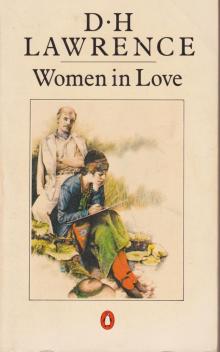 Women in Love
Women in Love The Ladybird
The Ladybird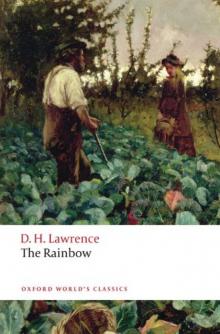 The Rainbow
The Rainbow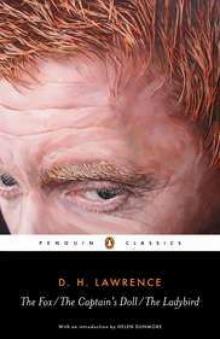 The Captain's Dol
The Captain's Dol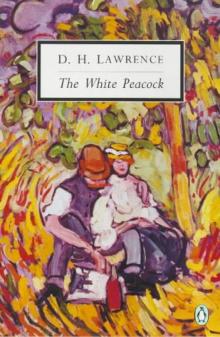 The White Peacock
The White Peacock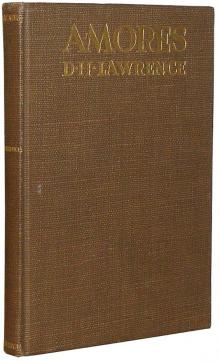 Amores
Amores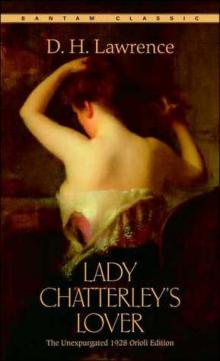 Lady Chatterley's Lover
Lady Chatterley's Lover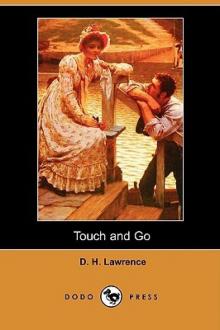 Touch and Go
Touch and Go The Wintry Peacock
The Wintry Peacock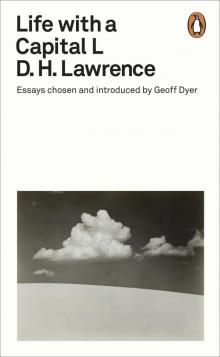 Life with a Capital L
Life with a Capital L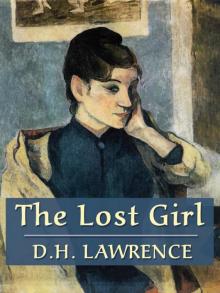 The Lost Girl
The Lost Girl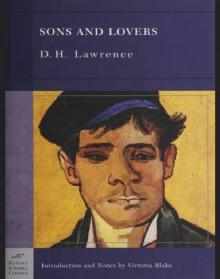 Sons and Lovers
Sons and Lovers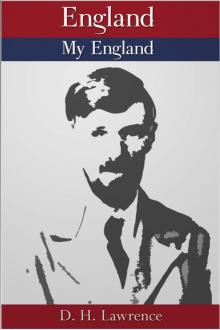 England, My England
England, My England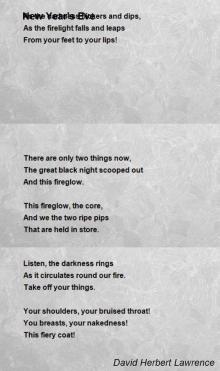 New Poems
New Poems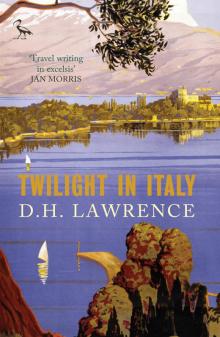 Twilight in Italy
Twilight in Italy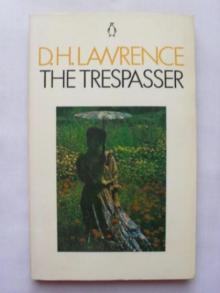 The Trespasser
The Trespasser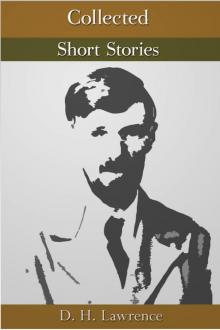 The Collected Short Stories
The Collected Short Stories The First Lady Chatterley's Lover
The First Lady Chatterley's Lover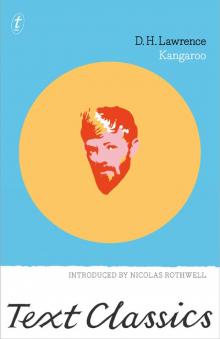 Kangaroo
Kangaroo Bay
Bay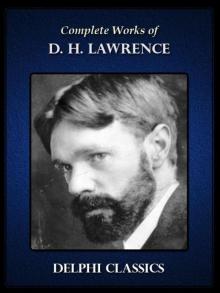 Complete Works of D.H. Lawrence
Complete Works of D.H. Lawrence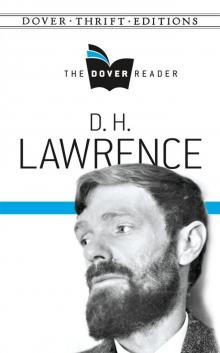 D H Lawrence- The Dover Reader
D H Lawrence- The Dover Reader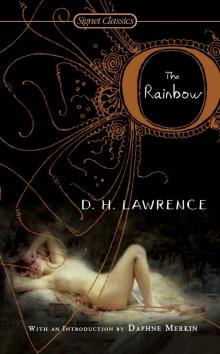 The Rainbow (100th Anniversary ed.)
The Rainbow (100th Anniversary ed.)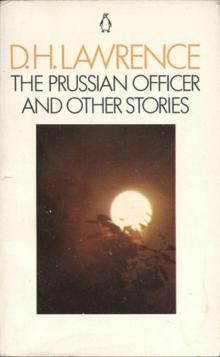 The Prussian Officer
The Prussian Officer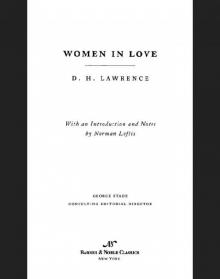 Women in Love (Barnes & Noble Classics Series)
Women in Love (Barnes & Noble Classics Series)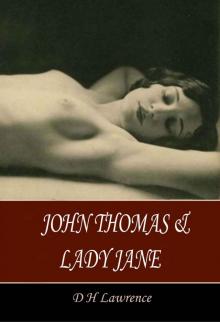 John Thomas and Lady Jane
John Thomas and Lady Jane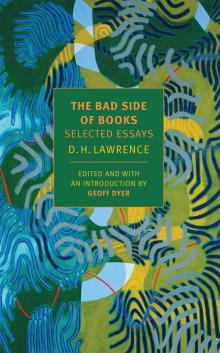 The Bad Side of Books
The Bad Side of Books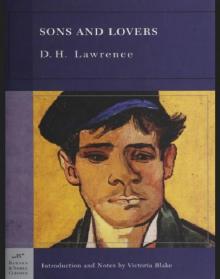 Sons and Lovers (Barnes & Noble Classics Series)
Sons and Lovers (Barnes & Noble Classics Series)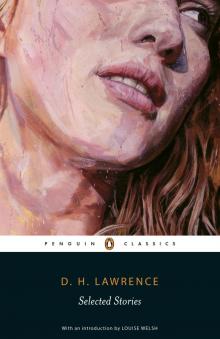 Selected Stories
Selected Stories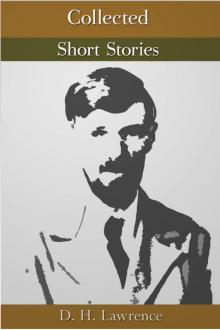 Collected Short Stories
Collected Short Stories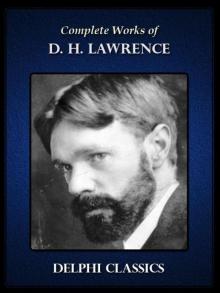 Complete Works of D.H. Lawrence (Illustrated)
Complete Works of D.H. Lawrence (Illustrated)